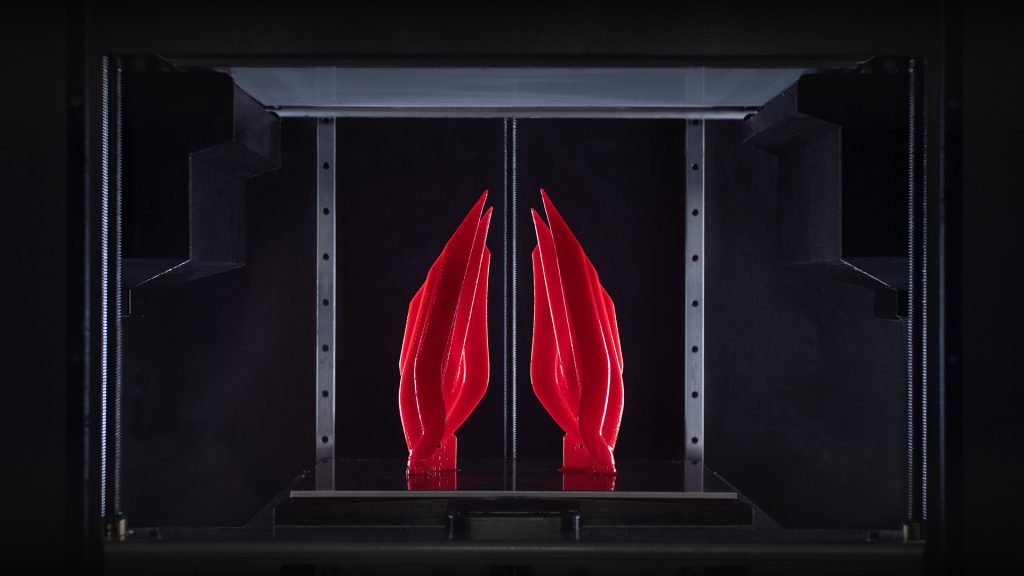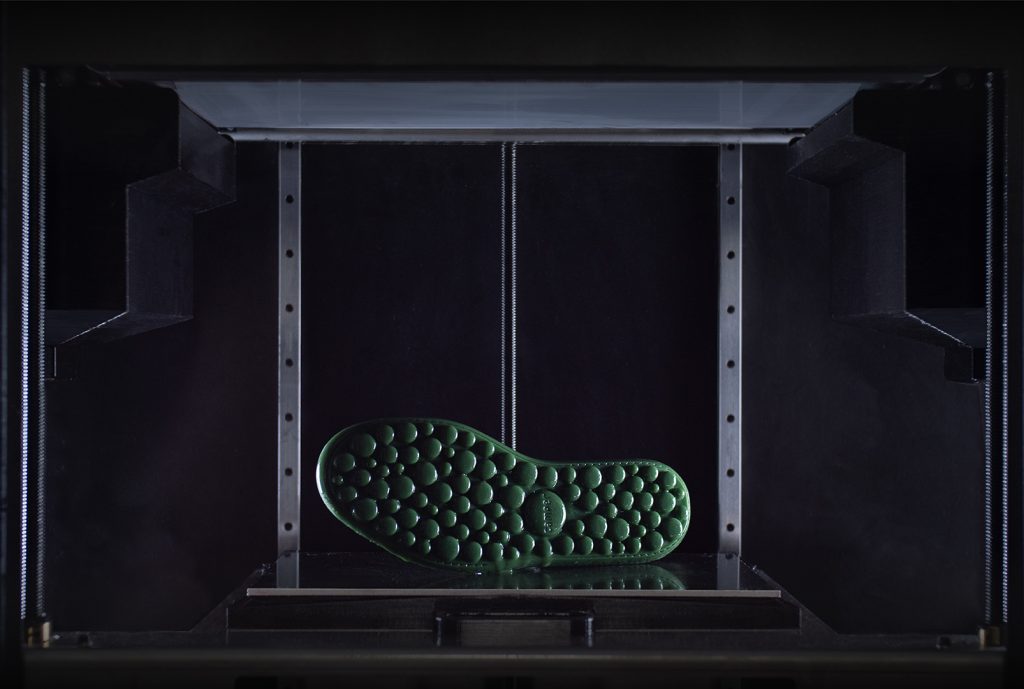BCN3D, a Barcelona-based 3D printer manufacturer, has unveiled its new Viscous Lithography Manufacturing (VLM) 3D printing technology, marking the company’s debut in the resin market.
When asked about a situation where Carbon or 3D Systems might want to acquire BCN3D, he added, “we highly respect if our competitors see us as competition”.
The result of over three years of research and development, the VLM process aims to combine high-performance materials and accessibility into one. Interestingly, the technology will also be a dual-material one, allowing users to print with two different resins in a single build.
One of the main selling points of the process lies in its ability to print highly viscous resins. Backed by a joint development agreement with chemicals company Arkema, VLM 3D printers will reportedly be able to process resins up to 50x more viscous than industry-standard ones, paving the way for high-strength parts with up to triple the impact resistance and double the tear strength. This includes Arkema Kepstan resin (PEKK).

BCN3D’s FFF history
Until now, BCN3D has stayed within the confines of the FFF 3D printing market, building a large portfolio of extrusion systems such as the Sigma D25 and Epsilon W50.
Late last year, the firm also acquired cloud-based additive manufacturing platform AstroPrint in a bid to bolster its software capabilities. Shortly after, BCN3D launched its own web-based Cloud platform, giving customers the ability to streamline their 3D printing workflows and scale their operations with real-time fleet management, remote build monitoring, improved collaboration between teams, and more.

How does VLM 3D printing work?
VLM relies on a UV light engine and an LCD screen. But unlike most other LCD 3D printers, the technology leverages a special mechanical system that laminates resin onto a film. This film is transported to the build area where the resin is cured, transferring from the film to the part on the build plate.
Cubicure is one company using a film to transport resin, however the company’s 3D printing systems can also use heated resin to change viscosity. BCN3D told 3D Printing Industry that VLM, on the other hand, avoids using heat altogether as they believe it can impact the photoinitiators present in the resin, resulting in unintended changes in properties. In fact, the process relies on low temperatures to ensure printing success, since resins need to remain viscous at all times. In the case of Cubicure, the resins are formulated in a way to ensure properties are stable according to the company.
Since VLM resins can be laminated and cured on two different films, it’s possible to speed up print times and even combine two resins for multi-material parts and soluble support structures – a feature we don’t see at all in the resin 3D printing market – although Dr. Adrian Bowyer did recently share a proposed method for SLA 3D printing with multi-materials. For BCN3D’s VLM method, multi-materials are made possible by simply switching between the films between layers, allowing for multi-colors and even multi-functional components. A section of a part can be designed to be tougher, while another section may be printed to be more flexible.
Resin will be stored in individual cartridges as opposed to a central vat and BCN3D today confirmed that the films will be a consumable part, albeit after hundreds of hours of print time. VLM parts will still need to be washed and cured and cross-contamination between resins is avoided via an unexplained internal cleaning method.
Additionally, BCN3D’s VLM process makes use of monocomponent resins formulations at room temperature, so pot life limitations aren’t a worry. The lamination mechanism also means the machines can theoretically realize zero waste 3D printing, whereby resins can be filtered and recirculated until every drop of material eventually gets printed. In terms of throughput, the technology will be about as fast as competing DLP 3D printers per layer, but with greater material efficiency. The company tells us that this is where the throughput gains arise – in terms of cost per object printed, rather than a speed advantage.
Together with Arkema, BCN3D will continue to co-develop new photocurable materials for VLM. Future resins will include fillers and fiber reinforcements to achieve a wide variety of mechanical performances, including high toughness and impact resistance.
Partnerships with Prodrive and Saint Gobain
BCN3D has already partnered with Prodrive, a motorsport firm that became one of the first to put VLM to the test. The company used the technology to 3D print end-use parts integrated directly into its cross-country cars, stating that material durability was a key factor in the project’s success.
Callum Harper, Design Engineer at Prodrive, adds, “VLM allows us to continue to use the engineering materials that we know and love, but instead in significantly finer resolution in all three directions, and the material is much more homogeneous, making the finished parts behave much more like a traditional injection molded part.”
Elsewhere, the company also partnered with automotive glass manufacturer Saint Gobain, which used VLM to 3D print 7000 positioning fixtures at €0.79 per part in just seven days.
VLM pricing and the Technology Adoption Program
In a press conference held earlier today, BCN3D CEO Xavier Faneca revealed that he has not yet made any concrete plans for a commercial release, but the technology will be available to use as part of the VLM Technology Adoption Program. Aimed at companies of all sizes, the program will see potential customers trial the technology at BCN3D’s Applications Center, where they’ll have a chance to 3D print real parts for their own businesses. BCN3D will use the program for feedback.
VLM 3D printers will eventually be available to purchase for under €50,000.
Subscribe to the 3D Printing Industry newsletter for the latest news in additive manufacturing. You can also stay connected by following us on Twitter, liking us on Facebook, and tuning into the 3D Printing Industry YouTube Channel.
Looking for a career in additive manufacturing? Visit 3D Printing Jobs for a selection of roles in the industry.
Featured image shows a resin build 3D printed via VLM. Photo via BCN3D.




